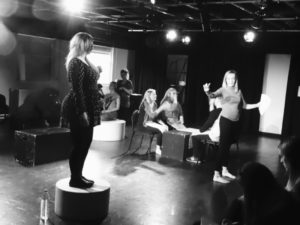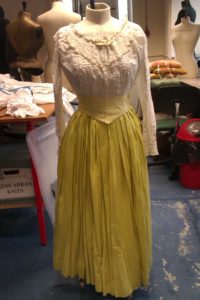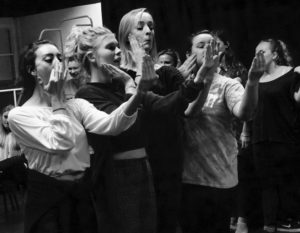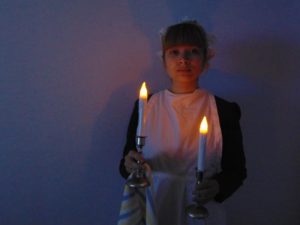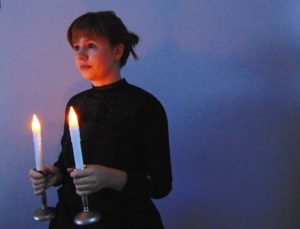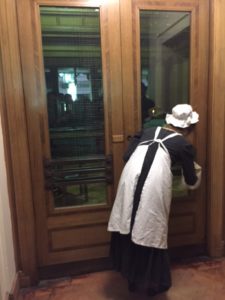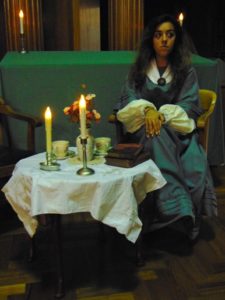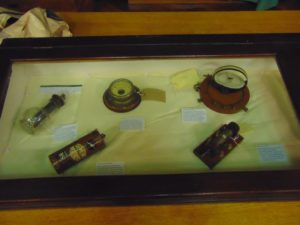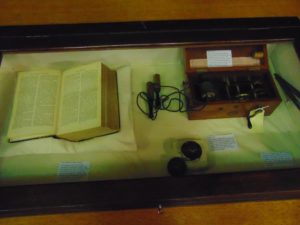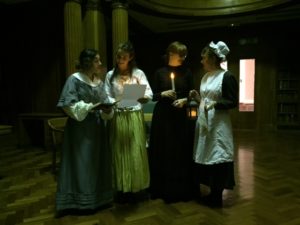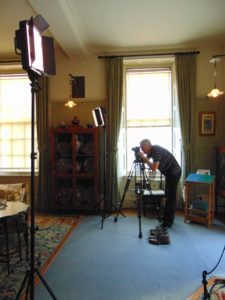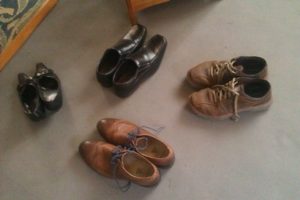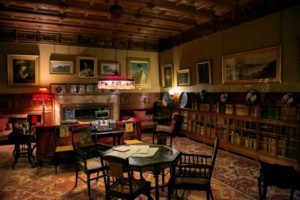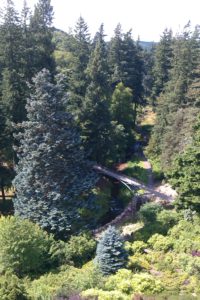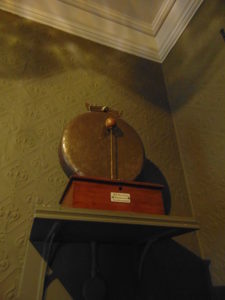On Monday 30 November Abigail Harrison-Moore and I will be joining a year 6 class (age 10-11) for a lesson to teach them about our work and test our educational materials. This is the age group at which we are aiming our online digital interactive, and as one of their science topics this year is electricity, this will give us an opportunity to integrate elements of history and art and design into their learning.
The design of our interactive focuses around floor plans of each of our three partner houses. At the beginning of the interactive, pupils will see a screen with pictures of each house, and will be prompted to move through the sections (levels) of the interactive which correspond to each of the houses in the order in which the houses were electrified (Cragside first, then Standen, as one of the first houses in the country to be built with electricity from the beginning, and finally Lotherton Hall, electrified in 1903).
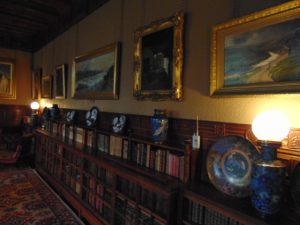
They will be able to select the first, Cragside, and on doing so will see a simplified floor plan of the house and a video introducing them to the guide character for the house. These guide characters, one for each house, will appear in videos throughout each house‘s section, or level, explaining content about the history of electricity. The guide characters, a butler for Cragside, the lady of the house, Mrs. Beale, for Standen, and a maid for Lotherton, will be played by drama students working on the Electrified musical. They will be filmed using green screen techniques and inserted into footage from each of the three houses.
Within the floor plan of each house will be four clickable rooms which pupils can select, in no set order. On selecting a room a large, wide angle photograph of the interior of the room will be displayed, and pupils will look for a hotspot within the picture. This will highlight an object in the room of electrical significance, and hovering over the hotspot will open a larger picture of the object accompanied by a question. Clicking on the question will then open a short video – 60 seconds – in which the guide character will answer the question and provide more information about the object or system to which it relates.
The questions, and their corresponding answers, will be focused around a different theme for each house. For Cragside, the theme will be science and technology; pupils will be encouraged to think about how objects and systems worked within the house, and will be introduced to circuit diagram symbols. This ties the interactive into the KS2 science curriculum. In Standen, the theme is aesthetics. One of the key novelties at Standen is the fact that electricity was built into the plans from the beginning, and thus light fittings were designed and selected iteratively to fit with the rest of the interior décor. Pupils will be prompted to consider how materials were chosen for this, and how electric lighting changed the look of a room. Lotherton represents a broader category of houses which adopted electricity slightly later, at the turn of the twentieth-century, and the theme of the questions and answers will be the social history of electricity: what different people thought of it depending on age, class and gender.
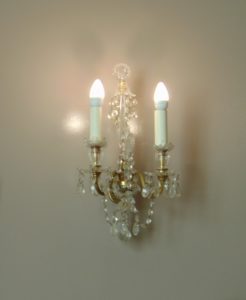
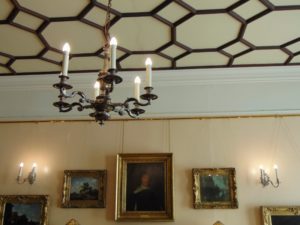
The rooms have been selected to give a range of masculine and feminine rooms – such as Colonel Gascoigne‘s Medal Room or office at Lotherton Hall, and correspondingly Mrs. Gascoigne‘s Boudoir or Morning Room – and family and servant areas, such as the kitchen at Standen or butler‘s pantry at Cragside. Otherwise the clickable rooms represent the range of rooms found in a typical country house: dining room, drawing room, morning room, library, hall, kitchen.
Once the pupils have completed each of the houses in order, there will be a section which tests their understanding of the content they have just watched by asking a set of multiple choice questions. These questions will be positioned beneath an image of a circuit diagram, and each question will relate to a circuit component covered in the material over the course of the interactive. Each correct answer will place a component on the circuit diagram, and at the end, if all questions have been answered correctly, the pupil will be able to click a button to activate the circuit, for example lighting up a bulb, ringing a bell and causing a motor to turn.
We envision the interactive being used both at home and in a classroom environment. At home, the pupil would simply go through it as described above. This should take no more than 20 minutes if all the materials are viewed. In the classroom, the interactive can be projected on a large screen as a whole-class activity, and the teacher can guide the pupils through it. A pupil can be called up to select the hotspot in each room, thus involving 12 pupils in total over the course of the interactive (four rooms with one question each per house). When the question is displayed, the teacher can ask the pupils to suggest answers before clicking on it to show the video. Alternatively the teacher can pick just one of the houses to cover in this way, for example if a visit is planned or if one of the house themes is a particularly good fit with their teaching. We also intend to provide supporting resources for teachers using the interactive in this way, including information about each of the country houses, photographs used in the interactive, and further follow-up activities such as a worksheet and suggestions for related drama activities.
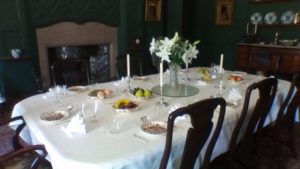
Thanks to Leeds Media Services, with whom we are working to produce the video content for the interactive, and to our technical officer Corey Benson, who is developing the interactive itself, we will be able to use this opportunity in the classroom to demonstrate a simple, limited version of some of the interactive content to get some feedback from the pupils and their teacher. We will then be able to incorporate this into the character scripts, which will be filmed in December.
